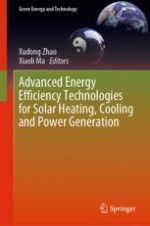2019 | OriginalPaper | Chapter
Solar Ejector Cooling Technologies
Authors : Xiaoli Ma, Wei Zhang, Fenglei Li, S. B. Riffat
Published in: Advanced Energy Efficiency Technologies for Solar Heating, Cooling and Power Generation
Publisher: Springer International Publishing
Activate our intelligent search to find suitable subject content or patents.
Select sections of text to find matching patents with Artificial Intelligence. powered by
Select sections of text to find additional relevant content using AI-assisted search. powered by
